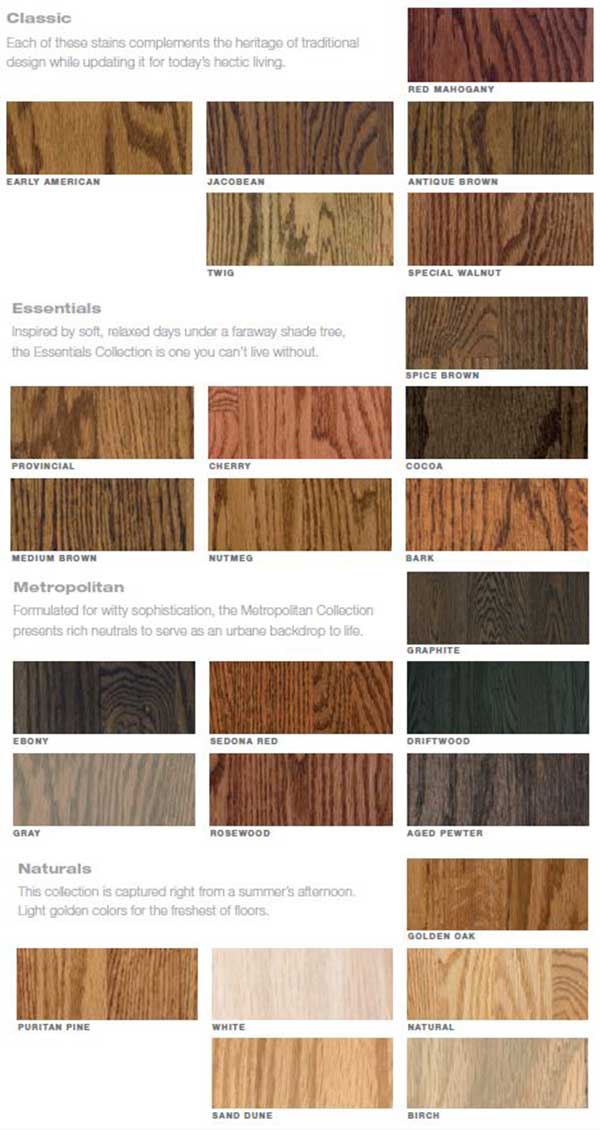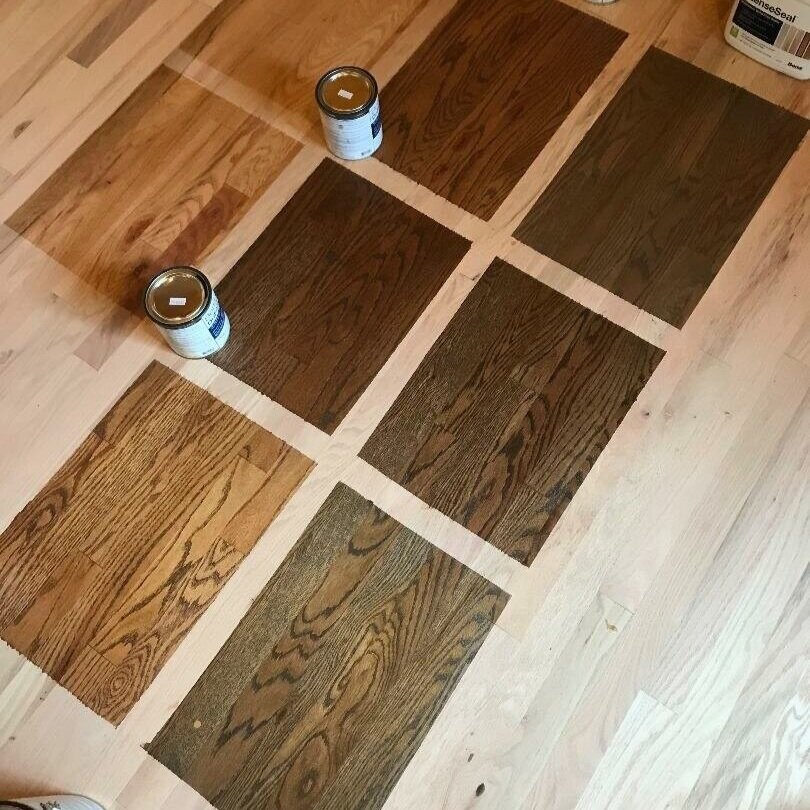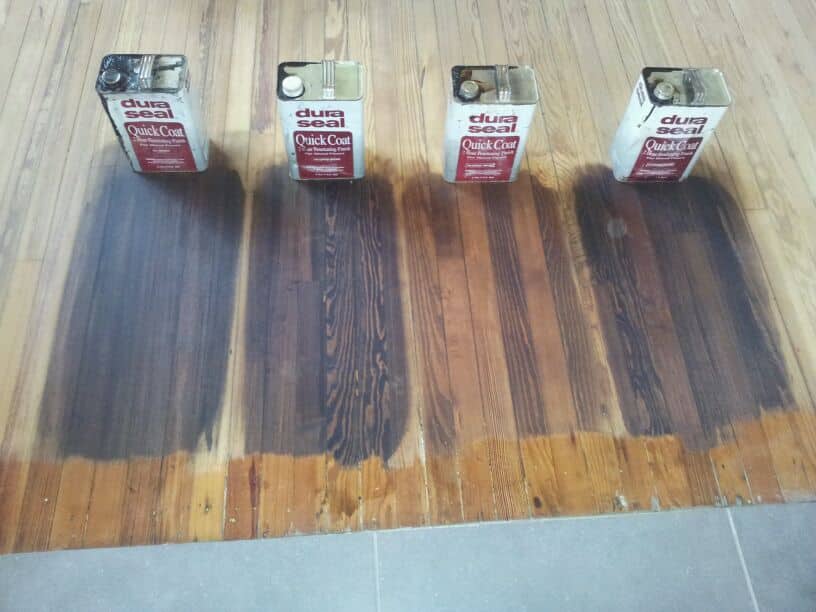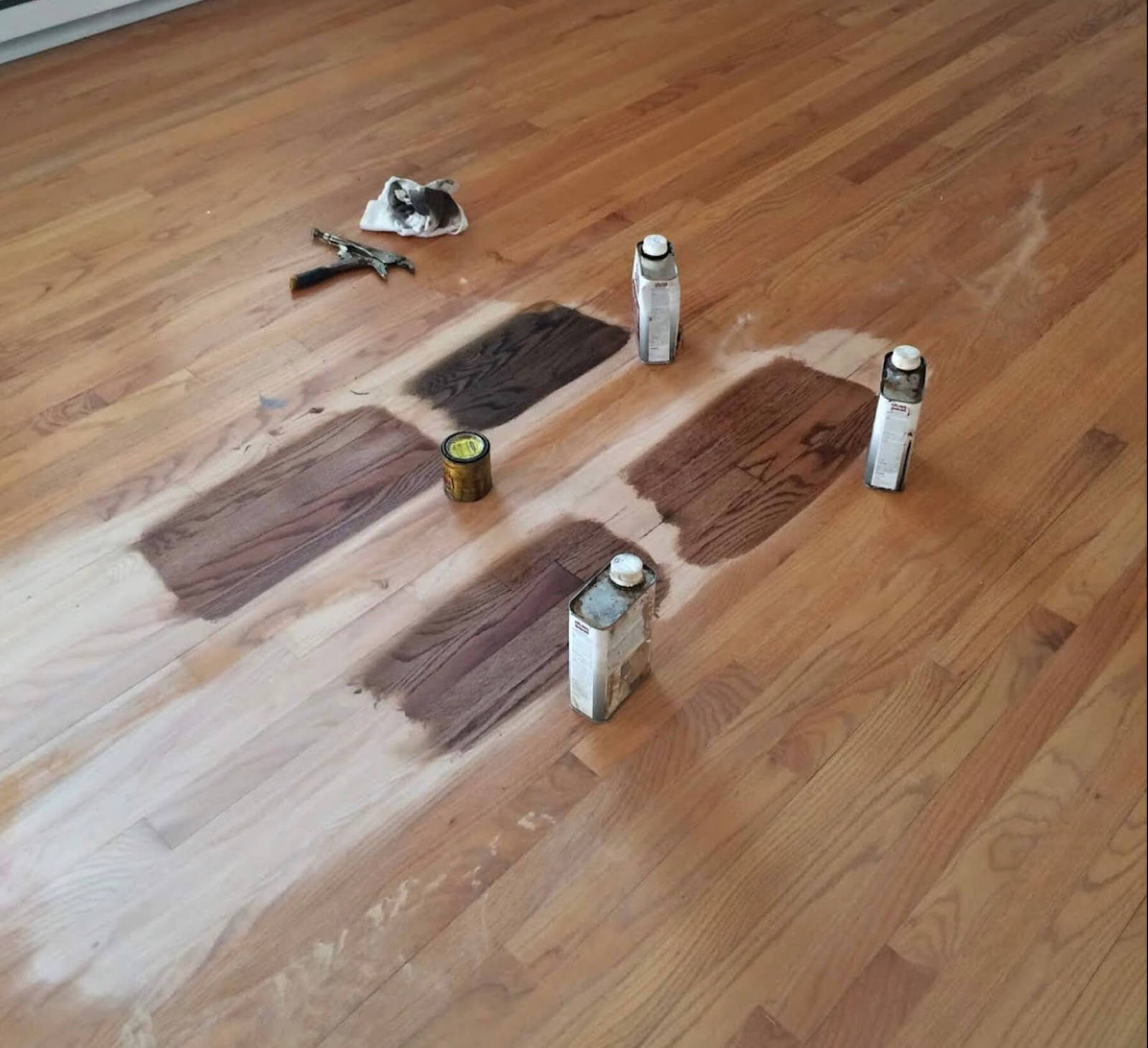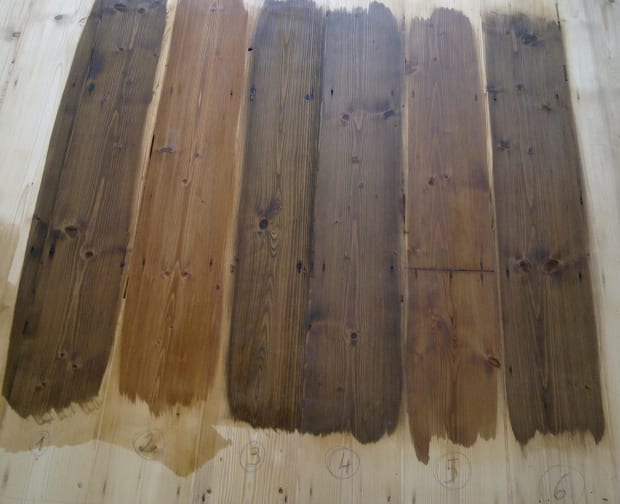Factors to Consider When Choosing a Stain
Selecting the right stain for your hardwood floors involves several important factors. By considering these aspects, you can ensure the best outcome for your flooring project:
- Wood Species Different wood species absorb stains differently, resulting in variations in color and appearance. Some woods, like oak and ash, take stains well and show off the grain beautifully. Others, like maple and birch, may be more challenging to stain evenly. Understanding the characteristics of your wood species is crucial in choosing the right stain.
- Desired Color and Finish The desired color and finish play a significant role in the stain selection process. Light stains can highlight the natural beauty and grain of the wood, creating an airy and bright look. Dark stains add richness and sophistication, making a bold statement. Consider the overall aesthetic you want to achieve and how it complements your home’s decor.
- Room Lighting The lighting in the room where the hardwood floor is installed can impact how the stain color appears. Natural light can enhance the vibrancy of the stain, while artificial lighting may alter its hue. Test stain samples in different lighting conditions to see how they look throughout the day and choose a stain that maintains its appeal in various lighting scenarios.
- Durability and Wear Consider the level of foot traffic and wear the hardwood floors will endure. High-traffic areas may benefit from darker stains that can hide scratches and imperfections more effectively. For areas with less wear, lighter stains can be a great choice to showcase the wood’s natural beauty. Additionally, some stains offer added protection and durability, which is important for long-lasting floors.
- Compatibility with Existing Decor Ensure that the chosen stain complements your existing decor and furniture. Harmonizing the stain color with other elements in the room creates a cohesive and balanced look. If you’re unsure, consider consulting with an interior designer or flooring professional to find the perfect match.

Popular Stain Colors for Hardwood Floors
Hardwood floor stains come in a wide range of colors, from natural hues to bold shades. Here are some popular stain colors to consider:
Natural and Clear Stains Natural and clear stains enhance the wood’s natural color and grain without altering its appearance. These stains are perfect for those who want to showcase the wood’s inherent beauty. Clear stains also provide a protective finish, preserving the wood’s natural look while adding a subtle sheen.
Light Stains Light stains, such as honey, golden oak, and fruitwood, create a warm and inviting ambiance. These stains highlight the wood’s grain and texture, making the room feel bright and airy. Light stains are ideal for smaller spaces or areas with limited natural light, as they can make the room appear larger and more open.
Medium Stains Medium stains, such as provincial, chestnut, and special walnut, offer a balanced and versatile look. These stains add depth and richness to the wood while maintaining a classic and timeless appearance. Medium stains work well with a variety of decor styles, from traditional to contemporary.
Dark Stains Dark stains, such as ebony, jacobean, and espresso, create a dramatic and sophisticated look. These stains add elegance and formality to any space, making a bold statement. Dark stains can hide imperfections and scratches more effectively, making them suitable for high-traffic areas. However, they may also show dust and pet hair more easily.
Gray Stains Gray stains have gained popularity in recent years for their modern and stylish appeal. These stains come in various shades, from light gray to charcoal, and can complement a range of interior styles. Gray stains add a contemporary touch to hardwood floors, creating a sleek and minimalist look.
Application Techniques for Hardwood Floor Stains
Applying a hardwood floor stain requires careful preparation and technique to achieve the best results. Here are some steps and tips for staining hardwood floors:
Preparation Begin by thoroughly cleaning the hardwood floor to remove dirt, dust, and debris. Sand the floor to remove any existing finish and create a smooth surface for the stain. Use a fine-grit sandpaper for the final sanding pass to ensure an even surface. Vacuum the floor and wipe it down with a damp cloth to remove any remaining dust.
Testing the Stain Before applying the stain to the entire floor, test it on a small, inconspicuous area or a scrap piece of wood. This allows you to see how the stain looks on your specific wood species and in the room’s lighting conditions. Make any necessary adjustments to achieve the desired color and finish.
Applying the Stain Use a brush, sponge, or cloth to apply the stain in the direction of the wood grain. Work in small sections to ensure even coverage and prevent lap marks. Allow the stain to penetrate the wood for the recommended time, then wipe off any excess with a clean cloth. For a deeper color, apply additional coats, allowing each coat to dry according to the manufacturer’s instructions.
Drying and Curing Allow the stained floor to dry completely before applying a protective finish. The drying time will vary depending on the stain type and environmental conditions. Ensure proper ventilation in the room to aid the drying process. Once the stain is dry, apply a clear finish, such as polyurethane, to protect the floor and enhance its durability.
Buffing and Polishing After the finish has dried, buff the floor to achieve a smooth and glossy surface. Use a floor buffer with a fine-grit polishing pad to remove any imperfections and create a polished look. This final step adds a professional touch and enhances the overall appearance of the stained hardwood floor.
Maintenance Tips for Stained Hardwood Floors
Proper maintenance is essential to keep your stained hardwood floors looking beautiful and prolong their lifespan. Here are some tips for maintaining your floors:
Regular Cleaning Sweep or vacuum the floors regularly to remove dirt, dust, and debris. Use a microfiber mop and a hardwood floor cleaner to clean the surface periodically. Avoid using water or steam mops, as excessive moisture can damage the wood and the stain.
Protective Measures Place doormats at entryways to prevent dirt and grit from being tracked onto the floors. Use furniture pads under the legs of chairs, tables, and other furniture to prevent scratches and dents. Avoid wearing high heels or shoes with sharp edges on the hardwood floors.
Address Spills Promptly Wipe up spills immediately to prevent stains and water damage. Use a clean, dry cloth to blot the spill and avoid rubbing, as this can spread the liquid and cause further damage. For sticky or stubborn spills, use a damp cloth and a hardwood floor cleaner.
Refinishing When Needed Over time, the stain and finish on hardwood floors may wear down, especially in high-traffic areas. Depending on the level of wear, you may need to refinish the floors to restore their appearance. This involves sanding down the existing finish, reapplying the stain, and sealing the floor with a protective finish.
Maintaining Humidity Levels Wood floors can expand and contract with changes in humidity, potentially causing gaps or warping. Use a humidifier in dry seasons and a dehumidifier in humid seasons to maintain consistent humidity levels in your home. Ideally, indoor humidity should be kept between 40% and 60%.
Choosing stain color for hardwood floors – Indiana Hardwood Flooring
wood floor stain colors from Duraseal by Indianapolis hardwood
Hardwood Floor Stain Colors Fabulous Floors Atlanta
Wood Floors stain colors for refinishing hardwood floors Wood
Staining Wood Flooring Los Angeles CMC Hardwood Floors
How to pick the BEST wood stain for your floors – Bower Power
A Complete Guide to White Oak Flooring – Chrissy Marie Blog
Low Key Floors – Design for the Arts u0026 Crafts House Arts
Related Posts:
